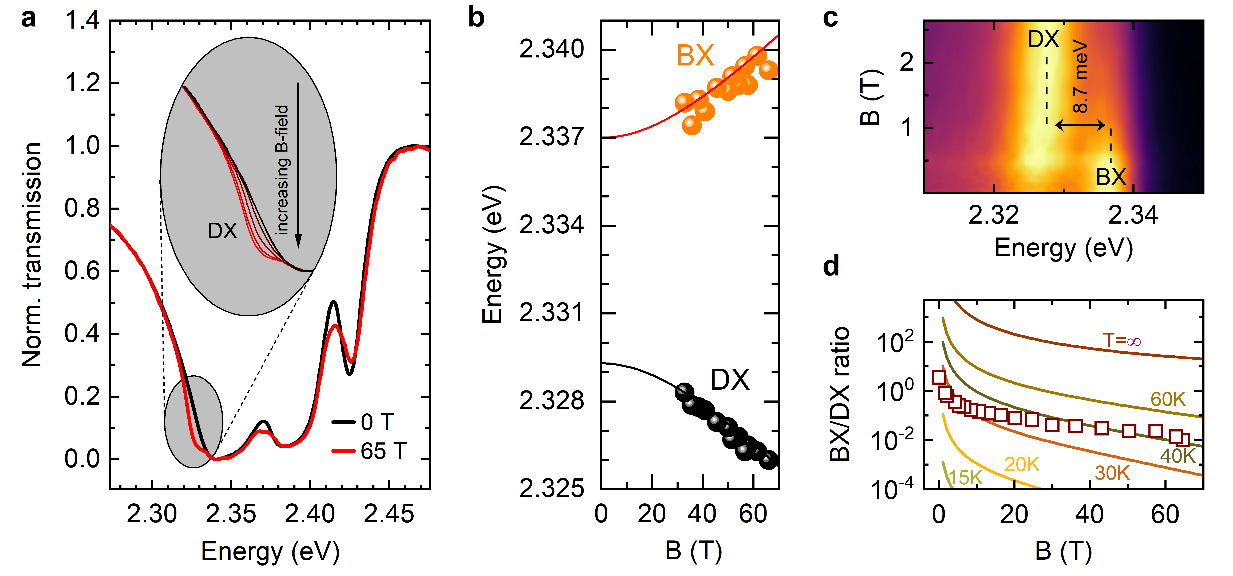Mateusz Dyksik, Wroclaw University of Science and Technology, Poland and Paulina Plochocka, LNCMI Toulouse.
Optically inactive dark exciton states play an important role in light-emission processes in semiconductors because they provide an efficient nonradiative recombination channel. Understanding the exciton fine structure in materials with potential applications in light-emitting devices is, therefore, critical and has to be taken into account during the design stage for a deterministic development of future optoelectronic devices. However, detailed information concerning the exciton fine structure is missing in the case of twodimensional (2D) perovskites, a hybrid organic inorganic material system with outstanding optical properties.
We show that in this class of materials, the dark exciton is the lowest-lying excitation. We reach this conclusion by performing optical-spectroscopy measurements in high magnetic fields. The in-plane magnetic field mixes the bright and dark exciton states, brightening the otherwise optically inactive dark exciton (Figure panel a). This new state exhibits characteristic properties typical for dark states – the oscillator strength increases with magnetic field and its energy redshifts (panel b). Although the dark exciton is the lowest-lying excitation in 2D perovskites, these materials exhibit intense photoluminescence emission with high quantum yield even at low temperatures (panel c).
In the magneto-photoluminescence data we find a fingerprint of a non-Boltzmann distribution of the bright (BX) – dark (DX) exciton populations – the BX/DX ratio does not follow the predicted (low) temperature curve, but instead overlaps with the 30-40 K curve (panel d). We attribute this to a phonon bottleneck, which results from the weak exciton–acoustic phonon coupling in soft 2D perovskites. Hot photoluminescence is responsible for the strong emission observed in these materials, despite the substantial bright-dark exciton splitting.

Figure: (a) Absorption spectra of (PEA)2PbI4 measured in Voigt geometry. With increasing magnetic-field strength, an additional absorption signal (DX) at the low-energy side of a bright exciton (BX) is visible. This new feature is related to the brightened dark exciton.
(b) Evolution of transition energy for the DX and BX states in a magnetic field.
(c) False-color map of the magnetoPL spectra. The DX dominates the emission already at 1 T.
(d) BX/DX intensity ratio. Solid lines stand for the product of BX/DX oscillator-strengths ratio and Boltzmann distribution for several lattice temperatures.
Brightening of dark excitons in 2D perovskites, M. Dyksik, H. Duim, D. K. Maude, M. Baranowski, M. A.
Loi, and P. Plochocka, Sci. Adv. 7, eabk0904 (2021).
https://www.science.org/doi/10.1126/sciadv.abk0904
Contact: mateusz.dyksik@pwr.edu.pl paulina.plochocka@lncmi.cnrs.fr






